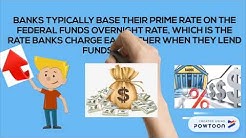Contents
Mortgage Loan Rate Comparison Mortgage Rates Going Up Fed Interest Rates Mortgages How the Federal reserve affects mortgage rates. When the federal funds rate increases, it becomes more expensive for banks to borrow from other banks. Those higher costs may be passed on to consumers in the form of higher interest rates on lines of credit, auto loans and to some extent mortgages.Interest rates adjust periodically with a variable rate mortgage, which means repayments may change throughout the loan term. Usually, the interest rate changes in relation to another rate – the Bank of England’s base rate is very influential on variable interest rates, as is the base rate of each lender.
Remarks: The above Hong Kong Dollar Prime Rate is an annual interest rate. The above information is for reference only. The Hong Kong Dollar Prime Rate will be subject to the rate as quoted by the Bank from time to time.
WSJPRIME | A complete WSJ US Prime rate interest rate overview by MarketWatch. View interest rate news and interest rate market information.. Historical and current end-of-day data provided by.
 In the current U.S. economy, the right thing is happening for. of such tight labor markets on a very important labor market variable: the employment rates of prime-age workers (25-54), or the share.
In the current U.S. economy, the right thing is happening for. of such tight labor markets on a very important labor market variable: the employment rates of prime-age workers (25-54), or the share.
Historical Mortgage Rates Chart Historical Mortgage Rates and historical arm index rates hsh associates has surveyed lenders and produced mortgage statistics for over 30 years. HSH’s Fixed-Rate Mortgage Indicator (FRMI) — the longest series of street-level pricing available — includes mortgages of all sizes, including conforming, "expanded conforming," and jumbo.
What is the Prime Rate? The Prime Lending Rate is the interest rate charged by banks to their most creditworthy customers (usually the most prominent and stable business customers). The rate is almost always the same amongst major banks. Banks make adjustments to the rate at the same time; although the rate does not adjust on any regular basis.
Odds Are Back Up To 83.1% (Likely) The U.S. Prime Rate Will Rise To 4.75% After The March 21, 2018 FOMC Monetary Policy Meeting Prime Rate Forecast As of right now, odds are back up to 83.1% that the Federal Open Market Committee ( FOMC ) will vote to raise the target range for the benchmark fed funds rate from the current 1.25% – 1.50%, to 1.50% – 1.75% at the March 21 ST , 2018 monetary policy meeting ( likely.
What is the Prime Rate? The prime rate is defined by The Wall Street Journal (WSJ) as "The base rate on corporate loans posted by at least 70% of the 10 largest U.S. banks." It is not the ‘best’ rate offered by banks. HSH uses the print edition of the WSJ as the official source of the prime rate.
The new one-year loan prime rate (LPR), which is the average. cuts of 10 basis points each by the end of the year. The current MLF rate of 3.3 per cent has remained unchanged since April 2018.
Prime Rate. The prime rate in Canada is currently 3.95%. The prime rate, also known as the prime lending rate, is the annual interest rate Canada’s major banks and financial institutions use to set interest rates for variable loans and lines of credit, including variable-rate mortgages.
Part 1 of this article compares NLY’s recent leverage, hedging coverage ratio, quarterly BV, economic loss, and current. rate environments. Part 1 also performs a detailed analysis of NLY’s MBS and.